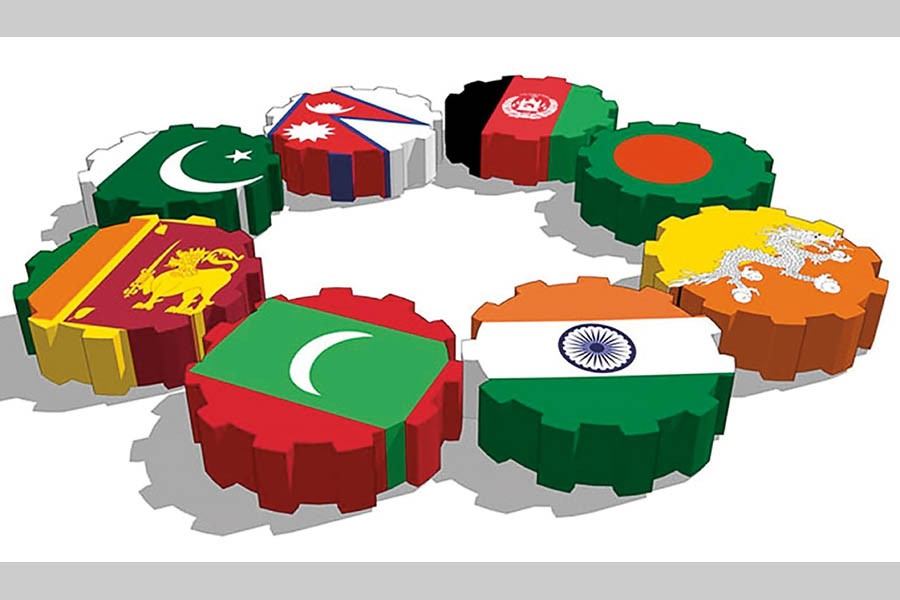South Asia is the most populous and the most poor region on earth. For decades, the region has been struggling for sustainable survival. No doubt that over the past decades, there was a lot of improvement on socio-economic front but sadly, the kind of politics required to emancipate the peoples in the region is still missing. The brand of politics particularly in Pakistan stands on the way to a closer regional integration. Despite higher economic growth and rise in per capita income, South Asia lags far behind Sub-Sahara Africa in terms of nutritional status of the children. With the presence of South Asian enigma as it is called, the region is facing newer challenges following the twists and turns of world events mostly in America and Europe. As most of the countries of this region rely on high doses of aid from and trade to these countries, any shock developed could jeopardise development efforts in this part of the world. Unfortunately, however, there have been little discussions on the upcoming newer challenges although much has been done in the case of old problems.
For example, the countries of this region lack emphasis on the role of the link between research and policy with an eye on long-term issues to be faced in the near future.This points to the need of a lot of policy changes by removing the disconnection between research and government. South Asian governments should be informed by research or evidence-based research. As Professor Wahiduddin Mahmud once argued,"the existing relation between education system and human capital formation is albeit dichotomous and looming large as a challenge in coming years. Faced with resource constraint, the choice is whether to go for basic or elitist education". The experience of South Korea that he drew upon, shows that manufacturing growth served as the linchpin while Indian experience shows service sector development as the beacon. India took advantage of new high-tech information revolution possibly indicating to the possibility of a more service sector-led growth with a chance to produce too much inequality or Dutch disease. In Bangladesh, however, the million dollar question is, can we take advantage of both – higher education and new high-tech service sector without sacrificing quality of workforce?
AS mentioned earlier, SA countries could attain good economic growth rate but the challenge looms large in maintaining the growth momentum in the wake of the brewing depression all over the world such as EU in disarray and some countries faced with slow growth rate. Rise in protectionism in the US could force upon a reconfiguration of the production basket. The much talked about trade war between China and USA is likely to affect the economies of South Asia – some favourably, some unfavourably.
The challenge is also how to move from jobless growth to job-led growth as, in some countries, growth rate accelerated but jobs could not be created to that extent. Bangladesh is an example in this case where it is being alleged that relatively better economic growth rate did not turn into creating more jobs. Thus it is no surprising that, unless massive jobs are created, demographic dividend could turn out to be as demographic disaster (as in Indian Punjab). Again, unless education system changed with a changing mindset of ensuring skill development, the looming challenge may not be faced. Happily however, we are witnessing a rapid growth of technical education in Bangladesh, more students are being enrolled there but the quality and the contexts are still posing big question marks. However, with rise in income in this region, meeting the demand for energy could be a challenge which could partially be faced with trans-border trade of energy. The challenge of governance and sustaining growth momentum with competitiveness are so much mentioned in the ongoing discourse that it needs rare citation. In SA, democracy and good governance are alleged to be at a discomforting zone with frequent human rights violation whereas democracy is considered to be a pre-condition for economic development. At the regional level, there is a lot of informal trade that needs formalisation of informal trade, trade-led investment and women entrepreneurship.
In the wake of upcoming challenges, regional integration needs to be cemented. There should be scope for learning from limited achievements in social sectors from West Bengal and Keralla flowing to other countries. Such a golden scope warrants free or unhindered mobility of people across the region. By now Bangladesh has become a new star in social indicators by successful social campaign for innovative low-cost delivery of services that could be transferred by more cordial cooperation among South Asian countries. Unfortunately, however, the history of SAARC in meeting the aspirations of the people of the region could pull policymakers out of this proposed initiative. But faced with huge scarcity of financial resources with dwindling aid from donors, countries of this region should embark upon raising tax/GDP ratio and increase interregional trade to meet revenue shortfalls. In fact, increased trade and investment among countries of this region could go a long way in helping meet the challenges.
While the whole world is being covered under the wrapper of integration - and now the EU with South American countries - reaping home immense trade-creation effects, South Asian countries are apparently lingering due to a lack of closer integration. Connectivity is the key to the success of policies in this region. And only firm political commitments by the heads of governments or states can boost growth and development on removal of the disease of suspicion in this region. And the time is now.
Abdul Bayes is a former Professor of Economics at Jahangirnagar [email protected]


